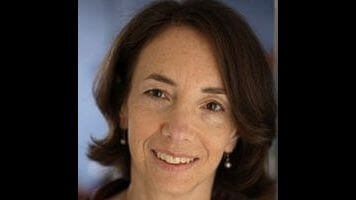The Children’s Crusade splits roughly equal time between the four children of the Blair family—Robert, Rebecca, Ryan, and James each get chapters from the perspective of their childhood, adolescence, and adulthood. Their stories are largely dedicated to the influence—good and bad—of their parents. The book opens on future family patriarch Bill Blair as he drives through California the day after he’s discharged from the army. Bill is depicted in a few sparse pages, but Ann Packer is so skillful at packing volumes into a few words that Bill’s perspective is deftly drawn in a couple masterful strokes. His wife, Penny, not so much. The reader sees little of who she is, but that’s another careful design by Packer: Understanding Penny’s motivations and desires would give the reader a better understanding of her than her children. Instead, the reader empathizes with her kids as they puzzle out their mother, who remains unlikable and wholly unknowable until the tail end of the book.
While the lives of Robert, Rebecca, Ryan, and James are told in separate chapters from childhood to middle age, the momentum of the story comes from the siblings getting together for a rare reunion in adulthood. With those pieces of the story split between adult and youth chapters, the reader slowly peels away the layers of the family members and dynamics. There is love and commitment but also indifference and dysfunction. Anyone who has siblings will appreciate Packer’s depictions of growing up with them and the struggle of maintaining the sometimes fraught relationships into adulthood. And anyone with parents can relate with the Blair kids as they seek—fruitlessly, mostly—to understand their parents as children and to accept their flaws as adults. The Children’s Crusade is less a coming-of-age story than a grappling-with-your-childhood story.
The children’s crusade of the title refers to the Blair children’s attempt to do something nice for their mother, putting into motion the optimistic but over-ambitious, half-formed plans so many children embark on. The other children’s crusade (not referenced, at least specifically) is the mostly apocryphal 13th-century tale of tens of thousands of European children leading a crusade to a holy land. It’s a powerful, sad story, and it’s purposefully vague except for the sense that the children are so disappointed in the adults, and the powers-that-be in their lives, that they band together to break away and do their own thing. There are different versions of the story, but in each the children’s crusade end in disaster. Likewise, the Blair children fail in theirs. Penny is a consistently disappointing figure in their lives, and in the adult chapters we see how her children have come to blame her for their family strife. Their father, meanwhile, sits atop a pedestal of godlike status, in whose shadow his children can look but never hold up. As children, they don’t understand why their parents are they way they are. In adulthood, they attempt to understand their parents as people—who fall short in all the ways people fall short, but that are so much harder to comprehend when it’s their parents.









































